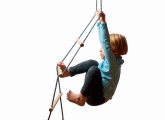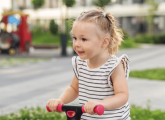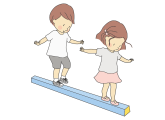From open-ended play to rich language opportunities, James Tunnell shares five reasons to add natural resources to your setting…
No matter the season, natural resources are all around us. Whilst many of us already have some in our discovery baskets or loose parts play areas, introducing natural resources throughout your early years setting can have positive outcomes for all our children.
Ideally, we would want children to go outside to explore nature. However, when that’s not possible, bringing nature inside is one way for them to experience the natural world.
Be mindful not to make this tokenistic by bringing only small amounts in at select times, such as a few dried leaves in a tuff spot.
If you’re going to embrace bringing nature in, bring enough for all children to access continuously.
In contrast to the many purposely made resources in our settings, natural resources are more open-ended and can provide more opportunities for children to engage in creative loose parts play.
Loose parts play won’t happen instantly, nor is it guaranteed when you introduce natural resources. However, the more open-ended a resource is, the more opportunities you’re providing for children if this is their style of play.
Having a range of resources helps to contribute towards exploration and vocabulary development. Most natural resources are varied, giving children many opportunities to explore their language with practitioners.
For example, you might explore a basket of sycamore keys with a child and talk about how some are big and some are small, some are dark brown and some are light and some are connected to others.
Having a range of resources helps to contribute towards exploration and vocabulary development
Compared to plastic resources, many natural materials respond in a variety of ways to being submerged in water or rolled in sand.
Draw attention to these differences, talking about them with the children and teaching new words through conversation.
All natural resources decay. Plants disperse their seeds and rot into the earth. Dried leaves and old pinecones in your setting demonstrate their wear and tear and are a wonderful experience for children to learn about this process.
Consider adding a compost bin to your outside space to demonstrate the life cycle of these treasures.
Natural resources, sourced responsibly, are a wonderful doorway into the world of sustainability.
Teaching children about how to source these objects, take care of them and then return them to nature once used is a powerful lesson all of us need to learn as we try to become sustainable world citizens.
James Tunnell is an early years trainer, coach and consultant. Visit Nursery Nook.

Boost children’s confidence by letting them try
Editors picks

Mark making EYFS – How to prepare children
Editors picks

Early Years development – How to support children
Editors picks
